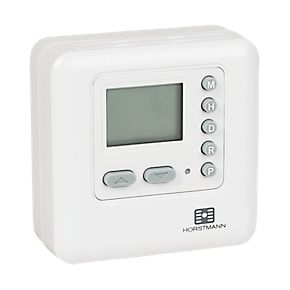Hi
Need a bit of help/advice regarding the current wiring of my oil-fired central heating system, which was installed by the previous owners.
Basically, there is a white single flex cable running underground in conduit from my house to the shed to feed a warmflow 70/90 oil boiler, boiler stat and a Wilo Gold 50 pump.
The flex cable is stamped "JSL H05VV-F 3X1), which I assume means that it is a 0.5mm flex cable, (please correct me if I'm wrong).
At the house the flex cable rises from underground and is wired directly into a mechanical timeclock. The timeclock is then just plugged into the ring main.
I want to relocate and renew the timeclock and hence extend this existing flex cable to the new timeclock location (via a junction box from the point where it enters the house)
My query is, assuming I am correct with regards to the cable size, is there a maximum distance that this 0.5m flex cable serving my boiler and pump can be?
Currently the cable is already approx. 16-17m long (13m underground, 2m exposed in house and 2m exposed in shed.
By the way, the only other controls for my central heating system is one motorised valve on the radiator circuit and it too is wired directly into the existing timeclock. There is currently no room stat or cylinder stat on my system.
Need a bit of help/advice regarding the current wiring of my oil-fired central heating system, which was installed by the previous owners.
Basically, there is a white single flex cable running underground in conduit from my house to the shed to feed a warmflow 70/90 oil boiler, boiler stat and a Wilo Gold 50 pump.
The flex cable is stamped "JSL H05VV-F 3X1), which I assume means that it is a 0.5mm flex cable, (please correct me if I'm wrong).
At the house the flex cable rises from underground and is wired directly into a mechanical timeclock. The timeclock is then just plugged into the ring main.
I want to relocate and renew the timeclock and hence extend this existing flex cable to the new timeclock location (via a junction box from the point where it enters the house)
My query is, assuming I am correct with regards to the cable size, is there a maximum distance that this 0.5m flex cable serving my boiler and pump can be?
Currently the cable is already approx. 16-17m long (13m underground, 2m exposed in house and 2m exposed in shed.
By the way, the only other controls for my central heating system is one motorised valve on the radiator circuit and it too is wired directly into the existing timeclock. There is currently no room stat or cylinder stat on my system.


